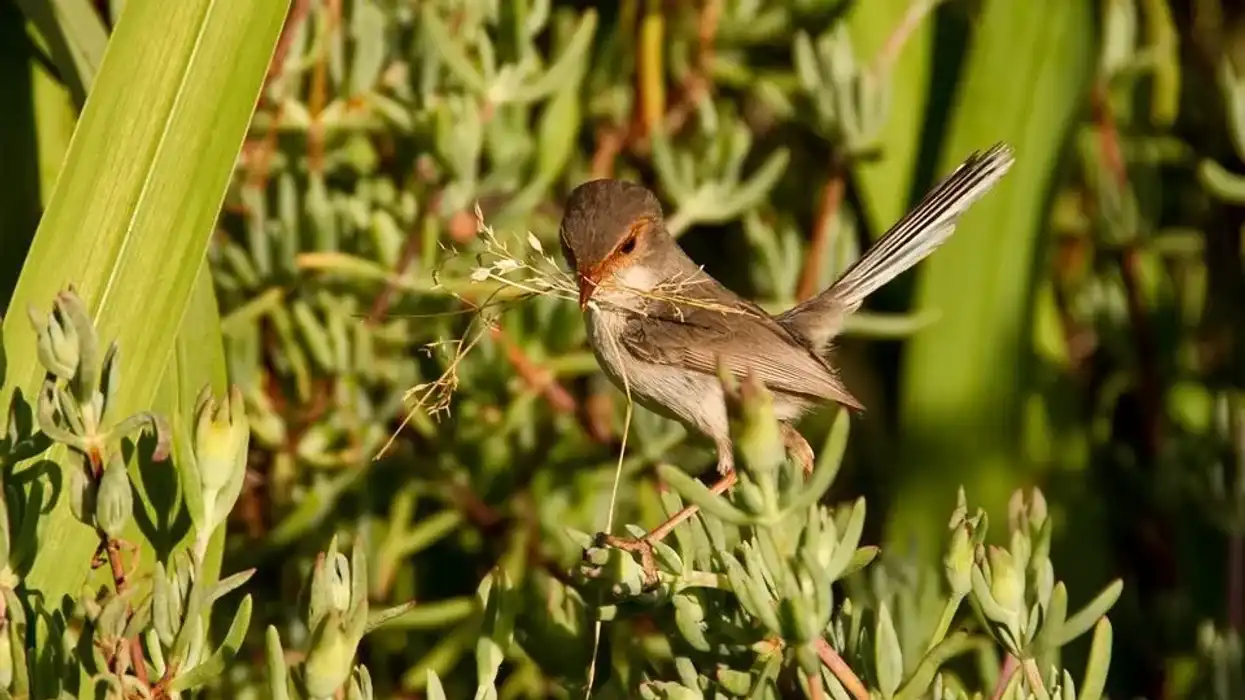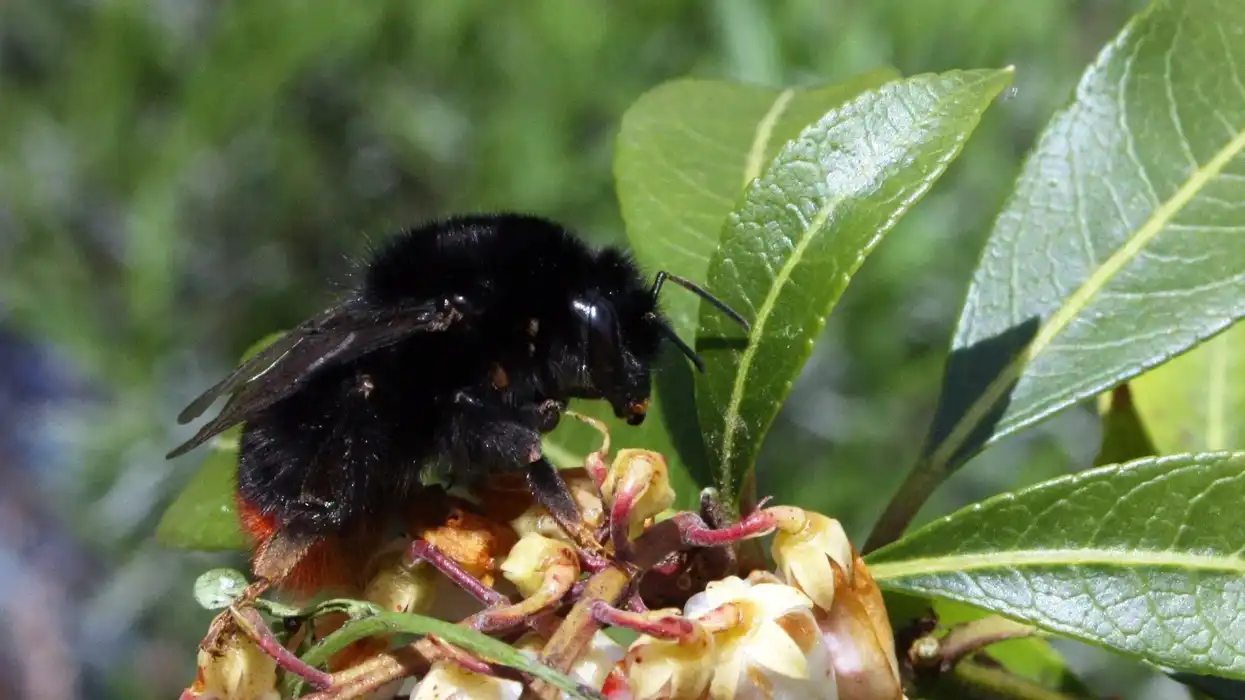The large yellow underwing (Noctua pronuba) is a moth species of the Noctuidae family. This moth is one of the most popular and familiar moths in the Palearctic realm.
This species is quite heavy and large. 'Noctua' is a Latin term which translates to 'little owl'. These moths are dull and have cryptic forewings and frequent bright yellow hindwings that are hidden under their forewings when they rest.
Also, this is the reason they are named 'yellow underwings'. Noctua is described under the tribe Noctuini and subfamily Noctuinae.
There are 520 recognized species included in over 160 genera within Noctuini and around 15 species within the Noctua genus. The family Noctuidae species are usually known as owlet moths, armyworms, and cutworms. Larvae feed on stems or roots of grasses at night and they are considered pests because this causes damage.
They are given the names 'armyworms' and 'cutworms' because of this damage. The term Noctuidae is a derivation from the genus term, Noctua.
If you enjoyed reading these large yellow underiwng facts, then you can also learn fun facts about the five-spotted hawk moth and the painted lady butterfly on Kidadl.
Large Yellow Underwing Interesting Facts
What type of animal is a large yellow underwing?
The large yellow underwing (Noctua pronuba) is a moth species of the order Lepidoptera and phylum Arthropoda. This moth is a migratory species and a large population appears in marginal parts of its range. A large yellow underwing moth camouflage is easy in their wide range of habitat and this species has variable coloration.
This moth roost in the day on or close to the ground and on plant species at night. This species scuttles wildly when they are disturbed and display their bright yellow underwings.
Larvae over-winter and on mild days in winter, they hunt and eat food. From July to September this species flies at night and these moths are attracted to light. Also, caterpillars are most active so it is best to sweep them at night in spring.
What class of animal does a large yellow underwing belong to?
The large yellow underwing (Noctua pronuba) belongs to the class of Insects of animals.
How many large yellow underwings are there in the world?
The exact population of large yellow underwing moths (Noctua pronuba) in their common world range is not known.
Where does a large yellow underwing live?
These moths are distributed and are common in a wide range throughout the Canary Islands, Europe, Turkey, North Africa, the Middle East, Afghanistan, Iran, northeast India, Iraq, Central Asia, Russia, Caucasus, Novosibirsk Oblast, and Transcaucasia. They were introduced throughout Nova Scotia, North America. Since then, their range of habitats on the world map has expanded.
What is a large yellow underwing's habitat?
These yellow underwing large moths are found around plants and grasses in garden areas. Their habitat range on the world map includes grassy lowland area, garden, grassland, wetland, farmland, woodland, and moorland.
Who do large yellow underwings live with?
These yellow underwing large adult moths and large yellow underwing caterpillars live on their own.
How long does a large yellow underwing live?
The large yellow underwing moth life cycle of adults is quite short. The large yellow underwing lifespan is around a year and it will take about 10-20 days for a caterpillar to become an adult butterfly.
How do they reproduce?
The large yellow underwing life cycle begins after fall and their reproduction starts in spring. The female lays several hundred large yellow underwing moth eggs on larvae food plants.
In captivity, the female also lays freely even in light traps. The eggs hatch after 10 days and the large yellow underwing pupa feed on herbaceous plants from grasses and dandelion to agricultural crops.
As they grow they feed at night and spend the day among the roots and base of plants. The larva or caterpillar spins a cocoon. This large yellow underwing cocoon is used by the caterpillar to rest.
There are distinctive black marks or dashes in their final instar. Also, in their penultimate stage, the caterpillars over-winter and feed.
Sometimes, in the middle of winter, they can be found on the ground or on the surface of the snow. Around May and July, pupation takes place under the surface of the soil. After about 10-20 days, the adults emerge. It is also easy to rear this species and caterpillars can be swept and at night in the spring.
What is their conservation status?
The conservation status of the large yellow underwing moth (Noctua pronuba) is Not Evaluated.
Large Yellow Underwing Fun Facts
What do large yellow underwings look like?
Large yellow underwings have a variable coloration on their forewings from brown to black. This common moth is a large species with yellow underwings.
Their forewings are sometimes ochreous-brown to dark-fuscous with a reddish or gray-white tinge. The male's antennae are ciliated. A pale streak runs along the costa on darker individuals.
Large yellow hindwings have a sub-terminal band on their bright orange-yellow hindwings. These contrasting colors on their hindwings are used to confuse their predators. Large yellow underwing moth caterpillar (larvae) is pale green or brown along with two lines of black dashes on the back and a pale dorsal line.
The head is dark marked and light brown-colored. Their hindwings are covered while these moths rest and are exposed when they are either disturbed or in flight.

How cute are they?
These moths and larvae (caterpillars) are brightly colored with black markings. However, these insects are not considered cute.
How do they communicate?
These adults communicate using sight and scent.
How big is a large yellow underwing?
The caterpillar length is 1.8-2.2 in (45.7-55.8 mm) in length. The wingspan of the adult species is 1.9-2.3 in (48.2-58.4 mm). These moths are almost twice the size of gypsy moths.
How fast can a large yellow underwing fly?
There is no data available on fast they move as caterpillars or fly as moths. However, they are great fliers when they are moths.
How much does a large yellow underwing weigh?
The exact weight of these moths is unknown.
What are the male and female names of the species?
There is no specific name given to a male and female large yellow underwing.
What would you call a baby large yellow underwing?
There is no specific name given to large yellow underwing baby. At the start of its life, it is called a large yellow underwing moth caterpillar.
What do they eat?
The diet of both adult moths and caterpillars is herbivorous, mainly consisting of plants and grass species. The large yellow underwing caterpillar eats plants, nectar, and grasses. The larvae or caterpillars feed so extensively that they can damage a whole plant. For this very reason, they are considered pests.
Are they dangerous?
These common brown moths do not pose any threat to human beings.
Would they make a good pet?
No, they would not make good pets. However, it is possible to breed these moths in captivity.
Did you know...
Some predators of these moths are bats, birds, chipmunks, squirrels, skunks, insects, and parasitoids.
One of the main defenses of these moths against their predators is mimicry. Both the adults and caterpillars use this mechanism. They also use the secondary setae surrounding their body against their predators. A tympanal organ present in the adults allow them to hear echolocation produced by bats and are able to avoid them.
How to tell the difference between a male and female large yellow underwing moth?
There is no particular difference between the female and male yellow underwing moths. However, some common differences are size, reproductive organs, antennae, eggs, abdomen tips, and dimorphism. The male's antennae are feathery compared to females. As females need to hold eggs in their abdomen, their abdomens are bigger. Males can show territorial behavior.
Are large yellow underwing moths endangered?
No, these moths are currently not endangered. In fact, these brown moths are widespread, even around agricultural crops where large yellow underwing control is a necessity. They can damage a plant as they extensively feed on the stems.
Here at Kidadl, we have carefully created lots of interesting family-friendly animal facts for everyone to discover! For more relatable content, check out these ghost moth facts and black witch moth facts for kids.
You can even occupy yourself at home by coloring in one of our free printable large yellow underwing coloring pages.










